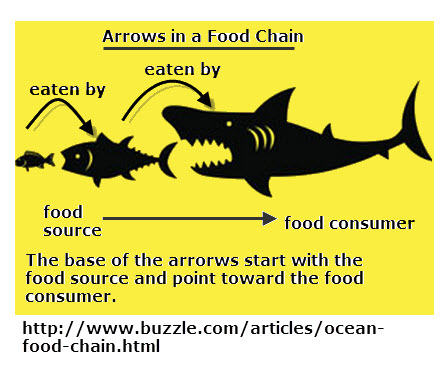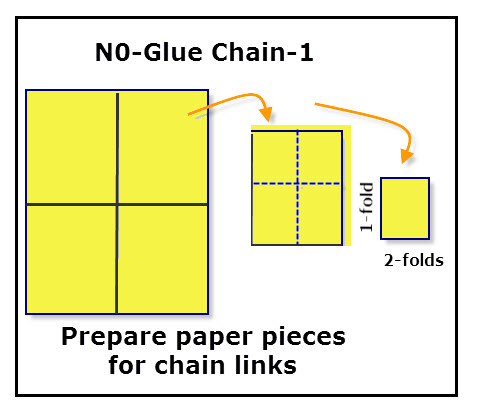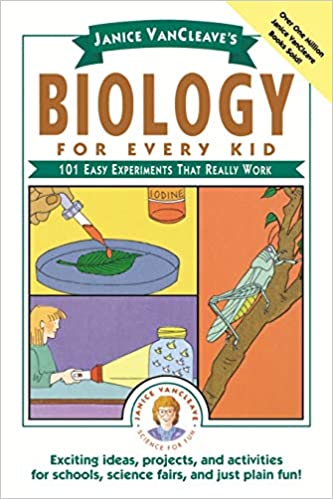
The arrows in a food chain are drawn from the food source to the food consumer. The arrow is a symbol for the words–“Eaten by.” In other words, in the diagram, the little fish is eaten by the medium size fish and the medium size fish is eaten by the big fish.
A food chain is the simplest order of food energy interdependence between organisms.
Biologists use a food chain or food cycle to show how each living thing gets its food. All food chains start with the sun and some type of plant. Each link in the chain is food for the next link. When an animal eats the plant, food energy is transferred from the plant to the animal. That animal is eaten by another animal and in turn that animal is eaten by another, with energy being transferred and used up at each step in the chain.
Purpose: To construct a paper chain to represent the different links in a food chain within a terrestrial ecosystem.
Materials:
Sun, Producer, Herbivore (Primary Consumer), Carnivore (Secondary Consumer), Carnivore (Tertiary Consumer)kPredator, Prey
8.11 Organisms and environments. The student knows that interdependence occurs among living systems and the environment and that human activities can affect these systems. The student is expected to:
(A) describe producer/consumer, predator/prey, and parasite/host relationships as they occur in food webs within marine, freshwater, and terrestrial ecosystems;
(B) investigate how organisms and populations in an ecosystem depend on and may compete for biotic and abiotic factors such as quantity of light, water, range of temperatures, or soil composition;
(C) explore how short- and long-term environmental changes affect organisms and traits in subsequent populations; and
(D) recognize human dependence on ocean systems and explain how human activities such as runoff, artificial reefs, or use of resources have modified these systems.
Biology for Every Kid
How is water transported through plant stems?What’s the effect of osmosis on a raisin?
What’s the best way to grow penicillin?
How are butterflies different from moths?
You will discover the answers in this book.
(Paid Link)

